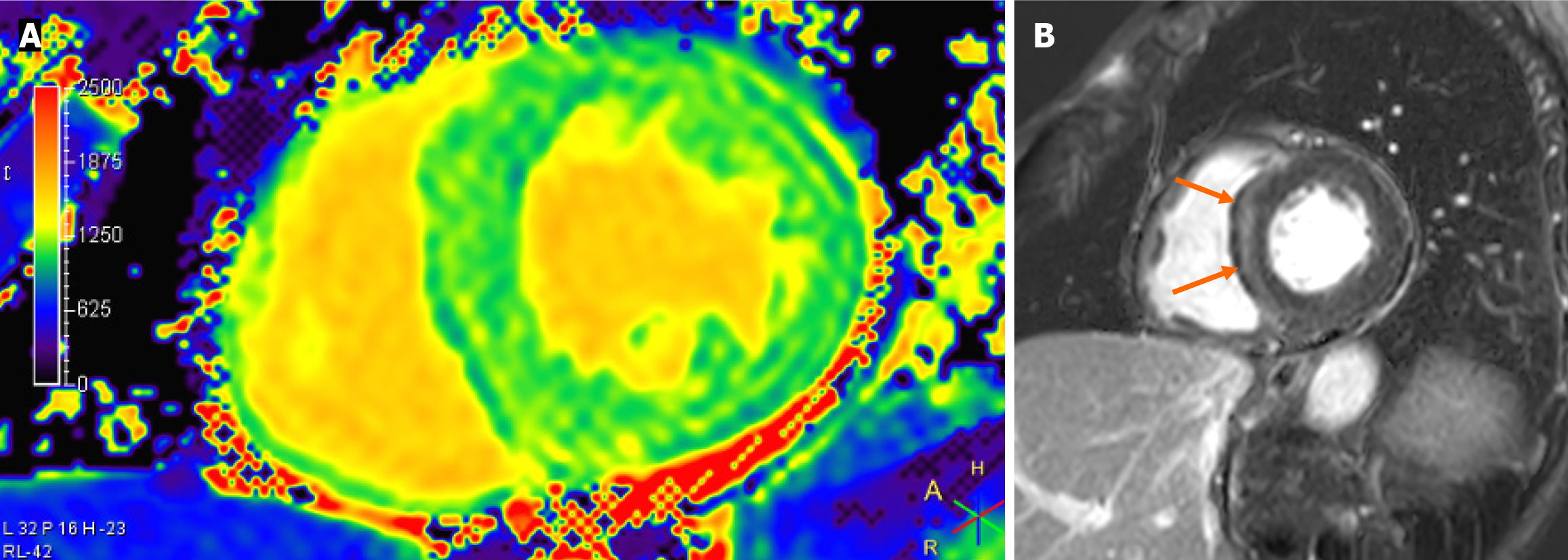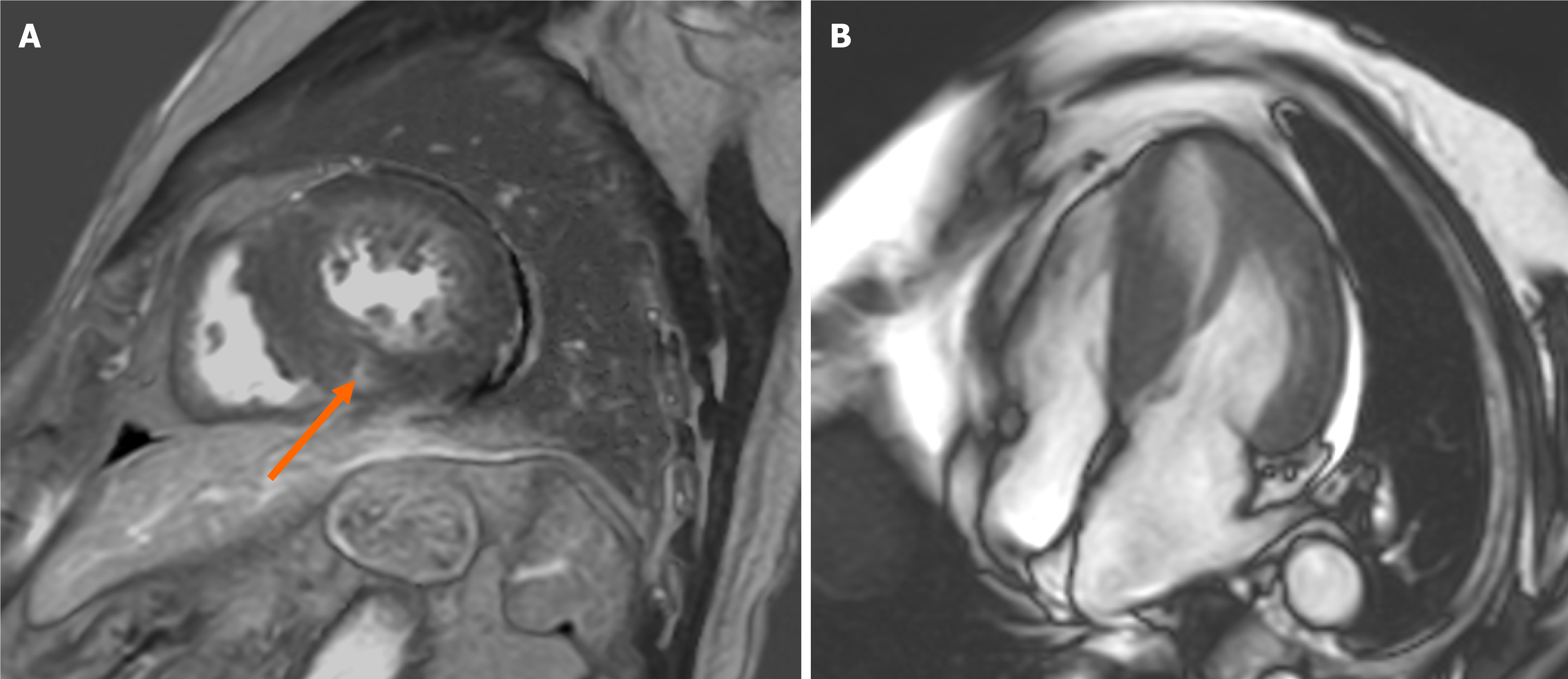Copyright
©The Author(s) 2025.
World J Radiol. Jun 28, 2025; 17(6): 104473
Published online Jun 28, 2025. doi: 10.4329/wjr.v17.i6.104473
Published online Jun 28, 2025. doi: 10.4329/wjr.v17.i6.104473
Figure 1 A 59-year-old man experiencing cardiac arrest during running is diagnosed with coronary vasospasm.
A: T1 mapping shows an elevated T1 value of 1127 ms at the midventricular septum; B: Non-ischemic late gadolinium enhancement is observed at the basal septum (arrows). This patient has experienced non-sustained ventricular tachycardia 9 times after the installation of an implantable cardioverter defibrillator.
Figure 2 A 50-year-old man experiencing cardiac arrest during daily work is diagnosed with coronary vasospasm.
His body mass index is 33.3 kg/m2. A: Late gadolinium enhancement is not found in this patient; B and C: Cine images at end-diastolic and end-systolic phases are shown, and the left ventricular ejection fraction is decreased to 33.3%. The out-of-hospital cardiac arrest is associated with neurological impairment in this patient.
Figure 3 An 80-year-old man experiencing cardiac arrest at the railway station is diagnosed with hypertrophic cardiomyopathy.
A: Focal, non-ischemic late gadolinium enhancement is observed at the mid-inferior segment (arrow); B: Asymmetrical septal hypertrophy and hypertrophied papillary muscle are shown. This patient has experienced non-sustained ventricular tachycardia and associated syncope 9 months after the installation of an implantable cardioverter defibrillator.
- Citation: Amano Y, Suzuki Y, Iso K, Ando C, Amano M. Diagnostic usefulness and limitation of cardiac magnetic resonance for identifying myocardial damage in survivors of cardiac arrest in midtown. World J Radiol 2025; 17(6): 104473
- URL: https://www.wjgnet.com/1949-8470/full/v17/i6/104473.htm
- DOI: https://dx.doi.org/10.4329/wjr.v17.i6.104473











